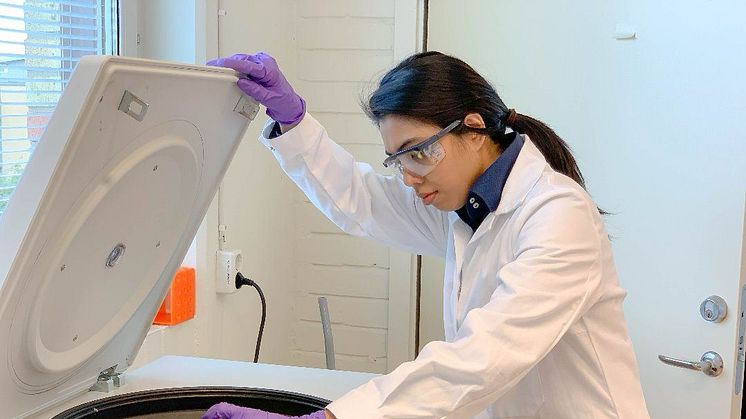
Press release -
Non-toxic solvents provide greener production of artificial membranes
Artificial membranes play a vital role in healthcare, energy storage and resource recovery. However, the fabrication is not environmentally friendly. In a thesis from Umeå University, Norafiqah Ismail introduces alternative solvents that outperforms traditional toxic ones in terms of cost, sustainability, and performance.
Based on Norafiqah Ismails groundbreaking research, it is now possible to produce greener artificial membranes thanks to solvents never before used for membrane fabrication.
“These membranes are not yet accessible on the market but have been produced on a laboratory scale,” says Norafiqah Ismail at the Department of Chemistry.
Artificial membranes have diverse applications. They are used in artificial kidneys and lungs and different kinds of batteries. These adaptable membranes also contribute to energy production in fuel cells, ensure clean water through advanced filtration, and facilitate efficient gas separation—like the separation of carbon dioxide. Moreover, they are a key component in resource recovery.
The membranes can be made from polymers, glass, zeolite, metal, or composite materials. Among these, polymeric membranes dominate due to their affordability, mechanical properties, and ease of production on a large scale.
“Despite their significant contributions to green processes and sustainable development goals, the fabrication of these incredible materials is not environmentally friendly. For instance, the most popular solvent for making membranes, N-methyl pyrrolidone (NMP), can cause reproductive disorders and has been restricted in Europe since May 2020," says Norafiqah Ismail.
Moreover, the other most common solvents, such as dioctyl phthalate (DOP) are identified as a human carcinogen, while dibutyl phthalate (DBP) potentially causes fetal malformation. These harmful solvents not only pose risks to human health but also contribute to environmental harm by generating vast amounts of wastewater during membrane production, which exceeds 50 billion liters annually. Thus, the search for environmentally friendly solvent alternatives holds significant importance.
In her newly published thesis, Norafiqah Ismail employed a life cycle assessment for the first time to evaluate the sustainability of membrane fabrication. Her analysis highlights the toxicity of solvents as the primary hurdle to sustainable membrane production. Taking a step forward, she introduces three families of solvents that are both cheaper, more sustainable and has better performance than the traditional, toxic ones. These newly developed membranes have been used for a variety of purposes, such as desalination, decontaminating nuclear wastewater, and purifying water. Having safe and easily accessible water plays a crucial role in safeguarding public health.
“This research not only holds societal implications but also bears significance for membrane manufacturers, especially considering the limitations imposed on the use of commonly employed solvents in Europe,” says Norafiqah Ismail.
More research on green transition at Umeå university
About the dissertation
Norafiqah Ismail, Department of Chemistry, Umeå University, defends her thesis entitled Sustainable membrane fabrication using greener solvents on Friday, 1st of September 2023. The defense will take place at 09.00 am in Lilla Hörsalen at the Department of Chemistry, KBC building. The faculty opponent is Professor Lidietta Giorno from the Institute Membrane Technology of National Research Council of Italy, CNR-ITM.
For more information, please contact:
Norafiqah Ismail, Department of Chemistry, Umeå University, Umeå, Sweden
Phone: +46 720329982
E-mail: norafiqah.ismail@umu.se
Topics
Umeå University
Umeå University is one of Sweden’s largest institutions of higher education with over 37,000 students and 4,300 faculty and staff. The university is home to a wide range of high-quality education programmes and world-class research in a number of fields. Umeå University was also where the revolutionary gene-editing tool CRISPR-Cas9 was discovered that has been awarded the Nobel Prize in Chemistry.
At Umeå University, distances are short. The university's unified campus encourages academic meetings, an exchange of ideas and interdisciplinary co-operation, and promotes a dynamic and open culture in which students and staff rejoice in the success of others.



